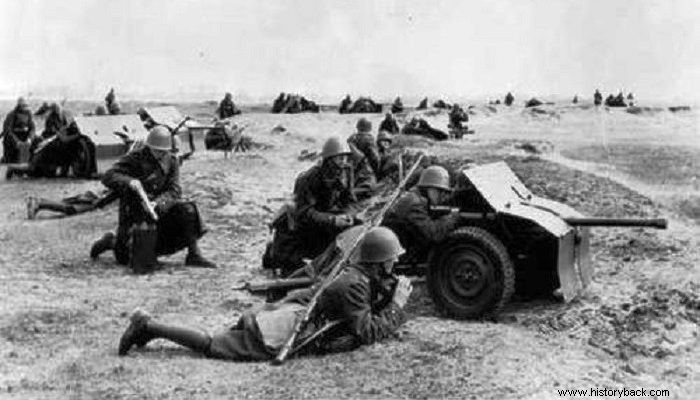
The battle of Satsk was one of the last battles fought by the brave Poles against the invaders in their homeland in 1939. However, the opponents in this case were not the Germans but the Soviets. Pre-war Poland had a strong military border guard (BGB). However, after the German invasion, the best units and all the heavy armament of the KOR had been allocated to the regular army to deal with the Germans.
The remaining KOR units remained on the Polish-Soviet border as a rudimentary garrison force. The Deputy Commander of the KOR, Brigadier General Wilhelm Orlick Orlick – Rickemann decided to gather other units and lead them against the Germans.
In a few dayshe managed to gather 4,000 men . But the Soviet invasion followed, and Orlik-Ruckeman ordered his men to march to the Kovel region in order to join up with General Kleeberg's Independent Task Force "Combat" (area that now belongs to Ukraine and Belarus). However, the Soviet invasion forced Orlik-Rickeman to change plans.
The Polish force moved into the adjacent forests on the then Polish-Soviet border. However, the morale of the men began to sink as they learned that the Polish resistance had collapsed everywhere.
No hope, no disappointment
On September 27, 1939, despite falling morale, despite reports that Poland had been occupied, despite shortages of heavy weapons and ammunition, Orlick-Rickeman decided that the force he commanded had an obligation to leave its mark on the idea , now and only, of the defense of the homeland.
Without hope, Orlik-Rickeman was just looking for the Thermopylae of himself and his men. Having reached this decision he ordered his men to move towards the forest of the village of Mielniki near the small town of Satsk (today it belongs to Ukraine).
His patrols informed him that strong Soviet forces, reinforced with tanks, were stationed in the city . After this the Polish brigadier deployed his men on the edges of the forest there and provoked the Soviets to attack him. Unbeknownst to Orlik-Rickeman, opposite him was the entire Soviet 52nd Rifle Division (MT) reinforced with a tank battalion of T-26 light tanks and T-28 medium tanks.
Soviet raid, Polish counterattack
The Soviets initially caught off guard did rush the Poles at 08.00 in the morning spearheading the tanks. The Poles did not react at first. They let the enemy tanks close to 500 m . But then they opened massive fire against them with the few Bofors anti-tank guns of 37 mm. which they also had with the 75 mm infantry escort guns. At the same time rifles and machine guns took over the Soviet infantry.
Carnage ensued.Soviet tanks were tossed one after the other into the air, terrorizing the Soviet infantry. Soon the Soviet tank battalion was gone. Soviet infantry losses were also heavy. About 30 Soviet tanks had been reduced to burning wreckage.
The terrified Soviet infantry retreated into the city. Orlik-Rickeman then ordered Major Balchersak's battalion to attack the Soviets in the city. The Soviets did not even stop to face the Polish raid and fled in disorder, leaving the city. The Poles had intact nine T-26 tanks, many trucks, guns and the building that served as the headquarters of the 52nd MT with all the documents and maps!
It took the Soviets about six hours to recover and react. Until then, Orlick-Rickeman decided to retire again to the woods. The Polish brigadier's force again fought the Soviets with relative success at the Battle of Vitichno, after which his men were ordered to disperse into small divisions and continue the fight as best they could.
After the battle
Orlick-Rickeman managed to escape to Britain. He never saw his beloved homeland again, dying in virtual exile in Canada in 1986, shortly before the liberation of Poland from the communist regime.
The Battle of Satsk holds a special place in military history. It was a battle the outcome of which could not change the situation. Poland had been occupied and Orlik-Rickeman and his men knew it. Nevertheless, they did not hesitate.
Casualties on both sides remain unclear. The Soviets claimed to have inflicted over 1,200 casualties on the Poles but this figure is not justified by the turn of the battle. On the contrary, the Polish claims about the Soviet losses seem more true based on its evolution. The Poles claimed to have caused casualties of 500 killed, 1,600 wounded and 300 captured (2,400 total) men and the capture or destruction of 40 Soviet tanks. Soviet vehicles and guns were also seized.
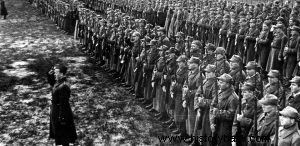
Polish soldiers of the KOP.
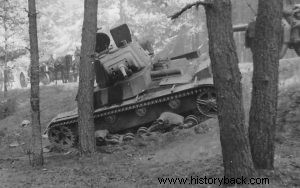
Abandoned Soviet T-26 light tank.
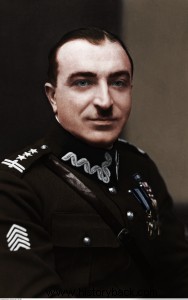
Orlick-Rickeman.
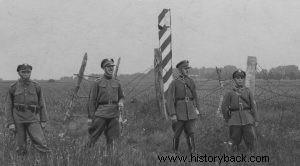
Polish border guards on the border with the USSR.
